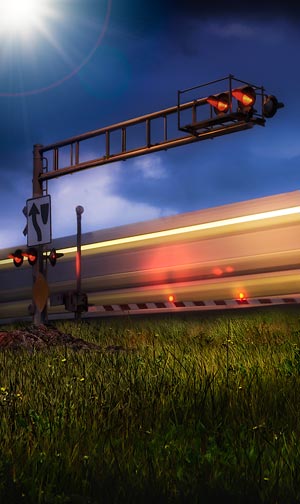The death of three at a Nebraska railroad crossing sparks concern
On July 26th, three young adults lost their lives in a train-car collision at a railroad crossing which all seem to agree was a dangerous one. Those connected to this tragedy are wondering why this crossing wasn’t more protected. The spokespersons for BSNF are claiming that the crossing had sufficient warning in the crossing’s “crossbuck” sign. Others are not so convinced: lights and gates could have prevented this tragedy.
Our stance is that lights and gates should always be installed or the crossing should be closed. Various parties, however, have differing views on what should be done: local businesses are generally quite opposed to the idea, as it creates inconveniences, and would rather see lights and gates installed to improve safety. Railroads, on the other hand, are usually proponents of either closing the crossing or “protecting” it with a “crossbuck” sign, claiming that lights and gates are too expensive to install at every crossing (even crossings where numerous accidents have occurred), and instead opting for greater “public awareness” (e.g. pushing for legislation which gets them off the hook at crossings and shifts the blame entirely on motorists).
To be certain, there’s something for everyone to be doing at crossings. Motorists should act safely. We’re with the railroads on this one. But dangerous conditions can easily get out of hand. This Nebraska crossing is an example: limited visibility and multiple tracks can start mounting problems. Given enough time, a tragedy is unfortunately increasingly likely to occur. A simple “crossbuck” sign is not protective in any sense of the term (except for often protecting railroad companies from liability).
The solutions, then, are not easy. York County, Nebraska Commissioner Gene Bergen has proposed a simple compromise: install stop signs at all rural crossings currently without protective equipment. It’s a lacking strategy compared to lights and gates (or simply eliminating the crossing), but it is meaningful. And he’s got a point: the average driver is much more likely to stop at a stop sign than at a crossbuck sign.
While it is by no means a perfectly desirable strategy, it fills some short-term gaps. It is financially impossible for every crossing in the country currently unprotected to receive lights and gates immediately. That’s not to say that they shouldn’t be installed – they should and they are, but they should be far more frequently than they are presently. It’s inexcusable to pass over them as if they did not matter. Statistics teach otherwise. A stop sign, however, might fill a temporary gap at a lot of rural crossings.
Which begs the question: Why hasn’t this already been done? Are the railroad companies really that careless about railroad crossing safety that they have not even researched the possibility? Are they that protective of their funding that they’ll continue to claim that crossbucks are adequate, when statistically they clearly are not?
It kind of makes you wonder.


